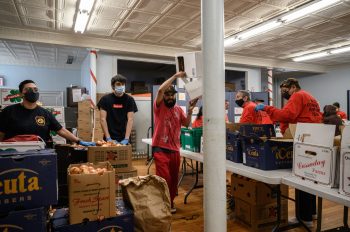
How have pandemic relief programs helped people facing financial insecurity?
How have pandemic relief programs helped people facing financial insecurity?

We’ll get a sense for how well pandemic relief programs worked today when the U.S. Census releases 2020 data on poverty. Other indicators out already, like hunger and food insecurity, suggest that safety net programs have worked to help keep people afloat. Democrats are pushing to extend some of those programs.
The government provided billions of dollars in pandemic aid – emergency unemployment benefits, stimulus checks and increased Supplemental Nutrition Assistance benefits, or food stamps.
Without all that, Cara Baldari from First Focus on Children said, “things would have been much worse.”
Baldari points to the advance child tax credit deposits, which can be up to $300 a month per kid.
“They put cash directly in the hands of families,” she said. That’s cash that’s been going toward things like groceries or rent.
Democrats want to continue the child tax benefit. The Treasury Department says it would cost taxpayers about $110 billion a year.
“It becomes just very expensive to make it permanent,” said Erica York with the Tax Foundation. She also said that may be why lawmakers are only proposing to extend it through 2025.
According to Columbia University’s Center on Poverty and Social Policy, child poverty dropped by more than 40% after the first child tax deposit in July.
There’s a lot happening in the world. Through it all, Marketplace is here for you.
You rely on Marketplace to break down the world’s events and tell you how it affects you in a fact-based, approachable way. We rely on your financial support to keep making that possible.
Your donation today powers the independent journalism that you rely on. For just $5/month, you can help sustain Marketplace so we can keep reporting on the things that matter to you.

















